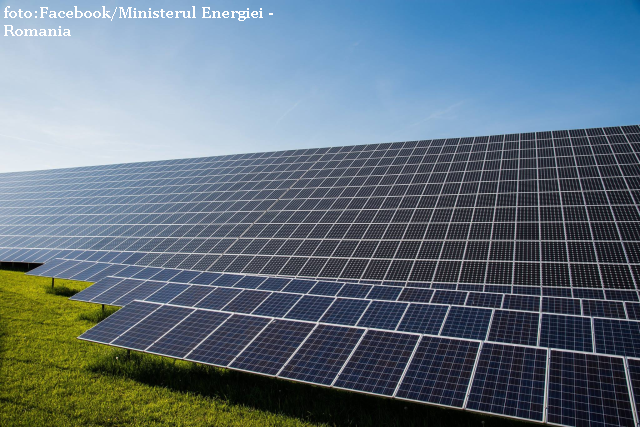Solar Energy in Romania
The year 2022 will remain in recent economic history as the year in which solar energy saw the largest addition of energy capacity

Eugen Coroianu, 27.10.2023, 01:39
According to a new Global Market Outlook For Solar Power 2023 – 2027 report, the year 2022 will remain in recent economic history as the year in which solar energy saw the largest addition of energy capacity, determined by the increase in energy prices, the stabilization of the supply chain, and post-pandemic recovery programs. In 2022, 239 GW of new solar capacity was recorded globally, marking another all-time high and registering an impressive annual growth rate of 45%, the highest since 2016. As a result, total installed solar capacity worldwide has crossed the 1 Terawatt mark at the beginning of 2022, and rose to almost 1.2 TW at the end of the year.
Every hour, the Earth receives a sufficient amount of energy to support the planetary consumption for a period of one year, says Mădălina Nechifor – PhD student at the Faculty of Electrical, Energy, and Applied Informatics Engineering with the Gheorghe Asachi Technical University in Iasi (northeast Romania), in a material published on the Infoclima website. Although we currently manage to convert only a small fraction of the available solar energy into electricity, in the future we will be able to optimize and use more and more of this resource, with significantly lower costs compared to conventional energy. The key to ensuring economic prosperity, sustainability, and environmental health, while creating new local jobs and providing greater energy autonomy, as well as reducing energy poverty, lies in the implementation of an efficient system based on renewable and free sources, such as solar energy.
Although the prices of facilities of this kind have risen quite a bit in recent years, solar power remains significantly cheaper than any fossil fuel or nuclear power, taking into account the general trend of increasing prices of energy technologies. In fact, prices have already started to fall on some levels. Vlad Zamfira, from the specialist website Infoclima, said:
Investment in photovoltaic systems is a must-do, especially in the context of the increase in energy prices starting at the beginning of 2023. ESMAP, an indicator that reflects the potential of photovoltaic energy of each country, for Romania it provides us with a value of almost 3.6 kilowatt-hours per square meter per day, and this places us globally at number 182. Overall, the outlook for solar energy in Romania is a positive one. Despite the many challenges and obstacles to a wider scale-up related to infrastructure, regulation, financing, and public awareness, the sector has steady growth: 20,000 prosumers in September 2022, for example. Numerous solar parks and PV installations have been built in various regions of the country, given that one hectare of land equipped with solar panels can generate an average of 1252 megawatt-hours of electricity during a given year in Romania. It should be noted that only by using 0.22% of the unpopulated area of our country, with the help of photovoltaic systems, theoretically, the entire national electricity requirement could be provided.
The International Energy Agency estimates that in 2023 approximately $380 billion will be invested in solar energy, surpassing investments in the oil industry for the first time. Each crisis has its own unique characteristics, and although the COVID-19 pandemic has created difficulties in the fight against climate change, the recent energy crisis has had the opposite effect, focusing attention on renewable energy sources, and solar energy has become a mainstay in reducing dependence on energy sources derived from fossil fuels.
For the end of the current year, the estimates are that the number of prosumers will exceed one hundred thousand. We have a national goal of phasing out the use of coal-based energy by 2032, which is expected to increase the adoption of sustainable energy, especially wind turbines and solar PV installations. According to forecasts by the data and analysis company Global Data, the estimated photovoltaic capacity in Romania will register a significant increase between 2021 and 2030, from 1.39 GW in 2020 to 4.25 GW in 2030, says Mădălina Nechifor, who has also developed her own initiative – Your Solar Roof – for public awareness of the beneficial effects of using solar panels and renewable energy in general. It should also be emphasized that, in recent years, the Romanian government has adopted policies and measures to promote renewable energy, including solar energy, through support and incentive schemes. Romania’s solar potential is considerable, given the favorable climatic conditions and high levels of solar radiation. It is essential to understand that, with the increase in the number of prosumers, we will not only have a greater share of energy produced from renewable sources, but will also help reduce dependence on energy imports, increase consumer welfare, and increase resilience both at the national level, as well as at the individual level.






























